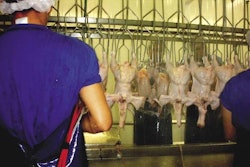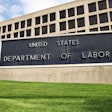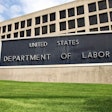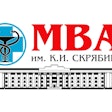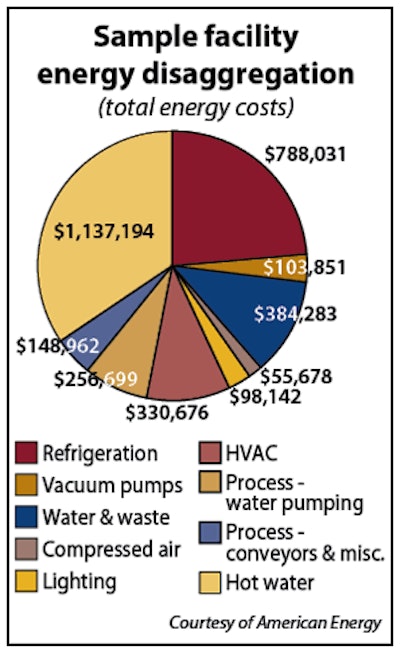
Stopping the flow of the substantial dollars that pay for your secondary utilities takes time, manpower and, yes, up-front money. It takes research, planning and investments, but the end result for a typical poultry processing plant is savings between 10 percent and 25 percent on energy consumption.
Where do you start?
The current emphasis on energy savings and carbon footprint reduction is resulting in a proliferation of offers for efficient products and equipment. Choices are good, but when dealing with a variety of options for nearly every point of energy usage, it can be difficult to determine the most effective starting point.
Calvin Wohlert, energy engineer and project developer with American Energy Solutions, cautions that the evaluation of energy usage cannot to be taken lightly. A plant's entire energy system must be part of the evaluation. Although it has been proven that an energy audit and resulting changes can be worthwhile, they are not without initial cost. A company needs to be prepared to invest both time and dollars.
Regarding initial planning, Wohlert says, "One of the more important items you have to do is to establish a budget. These things can be lucrative, but they are not free."
Where to look
Before you can begin moving towards savings, you need to establish your current usage. Gather plant information into an energy end-use disaggregation that tells you exactly how your energy is expended. This will give you a realistic base to work from and provide a road map that shows you where to focus your efforts.
Wohlert says, "Define your energy requirements, define your energy goals", and then, find ways to reduce your overall costs. Tasks include:
- Determine load profiles.
- Know how equipment is operating.
- Consider installing monitors to record how specific equipment is functioning round-the-clock.
- Measure and log all energy use.
- Understand utility rates and structure. This can be a complex task, particularly if variable usage rates are involved.
- Look at the entire system, not just isolated parts.
- See how to reduce energy usage in areas that offer the most savings.
A complete overview is critical. If, for example, one of the projects is to recover heat from a compressed air system and another is to reduce compressed air waste, you won't have much heat to recover from the compressors, which will affect your projected savings.
Each area of a plant offers a multitude of configuration opportunities for efficiency improvement. Savings can be found in relatively simple process changes or equipment adjustments or can be as involved as equipment replacements.
Table 1: Sample facility Phase I efficiency audit
Provider partners
Partnering with a programme provider can help develop a clear picture of energy costs and alternatives. Your needs and resources will determine the type of partner. A good partner will be knowledgeable about energy issues, unbiased on equipment and energy plans, and able to provide a fresh perspective.
Wohlert provided a rundown of some common provider options:
Using internal resources
Relying on internal resources can be done but it has its pitfalls. Before dedicating in-house staff, ask some hard questions. Does your staff have the time? Are there staff members who have expertise and experience in energy efficiency? Are they knowledgeable enough to recognise and select the best options so your company's investment reaps the highest rewards?
Kick-start your savings
Here is a trio of common energy savings areas to get you started:
1. Lighting:
Switching to energy-efficient lights can considerably reduce power usage. But, Wohlert says, also look at reducing consumption by turning off the lights. "Occupancy based controls are often missed, particularly in warehouses. Turn off the lights when they are not needed."
2. Compressed air: Possibly the most expensive of the secondary utilities, compressed air is typically very inefficient. According to Wohlert, up to 80 percent of its energy consumption can be evolved as heat. Minor reductions in pressure can have a major impact on savings.
3. Refrigeration: Operating refrigeration head pressure too high is another common area of waste. Taking into account the limitations of your system, investigate lowering pressure. This can be a quick, nearly "no-cost" change that offers significant energy-use reductions.


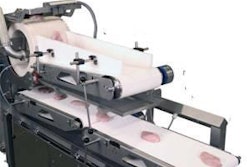
.jpg?auto=format%2Ccompress&fit=crop&h=167&q=70&w=250)

